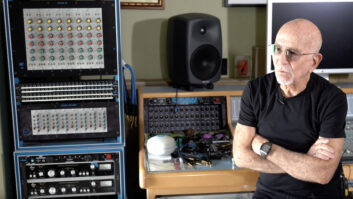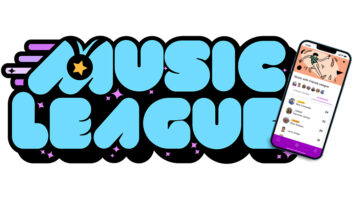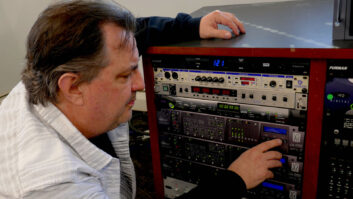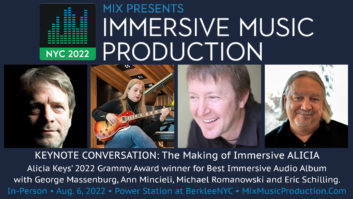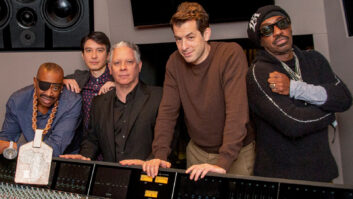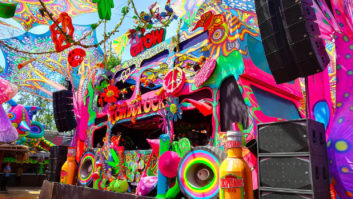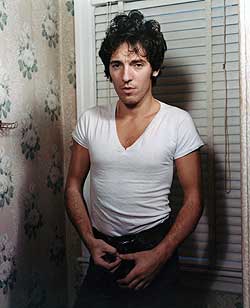
Photo: Frank Stefanco
Anyone who’s seen Bruce Springsteen in concert knows that The Boss doesn’t hold back; when he and the E Street Band are onstage, they’re giving their audience all they’ve got. Why play for an hour when you can go for two—or three? Why fade out when there can be “One more time!”? So if Springsteen’s going to issue a box set, it’s not going to be an early LP wrapped up with a few bonus tracks and a taller booklet—his box is going to be full.
Case in point: The Promise. Released in mid-November, this “Deluxe Package” includes the remastered Darkness on the Edge of Town album (first released in 1978); a making-of documentary (The Promise: The Darkness on the Edge of Town Story); a double-album’s worth of previously unreleased songs recorded during the Darkness sessions (also available for purchase separately); and four hours of concert footage on two DVDs, including a full-length concert recorded in Houston in ’78, and a unique live version of the Darkness album, performed front-to-back at the Paramount Theatre in Asbury Park, N.J., in 2009, in an empty theater—no audience, just musicians. And every disc has been meticulously mixed and mastered to bring this embarrassment of riches fully to life.
It’s important to note that the songs introduced on The Promise are not half-baked demos and outtakes. They’re fully realized songs that could easily have formed another double-album release, though were never final-mixed after the recording sessions in ’78. “This was all stuff that was left off the [Darkness on the Edge of Town] album simply because Bruce decides what suits the album,” says Bob Clearmountain, who mixed all of the “new” tracks and the Paramount concert. “He wants the songs he chooses to get certain ideas across. He’s so prolific; he writes all these amazing songs and then hones it down to what is most relevant.”
Like the original Darkness album, all of these bonus tracks were recorded at The Record Plant and Atlantic Studios (both in New York City) in 1978 with producer Jon Landau and (then) engineer Jimmy Iovine. “It was unusual to mix tracks that were recorded more than 30 years ago, but it brought back memories,” Clearmountain says. “I started in 1972, so the recording techniques that Jimmy used were similar to what I was doing back then on analog tape, where the drums would be on four tracks as opposed to 12 as we do nowadays, for example. It was kind of nostalgic, even though I wasn’t involved in recording the original record.”
Clearmountain, who was provided with Pro Tools transfers of the original analog tracks, mixes on a 72-input SSL SL 4000 G+ in his Mix This! studio (Pacific Palisades, Calif.). He used the original Darkness album as a reference while shaping the songs on The Promise. “I tried to keep the general vibe of what they did then,” he says. “I’d go through the Darkness album and find a song that was a similar tempo or mood to the song I was mixing, and I would actually A/B and try to keep the general atmosphere similar.”
Clearmountain also used the two live chambers he has at Mix This! and the Audio Ease Altiverb Version 6 plug-in to help re-create the sound of ’78: “Altiverb is a modeling reverb that comes with re-creations of many interesting real spaces,” he says. “I really like that because it gives the mix a more realistic-sounding environment. Of course, back then, they used EMT plates and spring reverb, so I also have a spring that I use; it’s a little Fisher Space Expander—just a cheesy little tube-driven mono spring reverb that really takes you back to that time period.”
In a few instances, however, Clearmountain, who has been mixing Springsteen releases since The River (1980), applied a slightly more modern approach. “The snare drum was a really big deal in the ’70s,” he says. “Darkness was mixed well [by Iovine and Chuck Plotkin], but many of the mixes had an incredibly loud snare drum, which I find a bit distracting. So I also applied what I’ve learned mixing with Bruce and others over the years, so you’re not going to hear this huge, bombastic snare drum on the mixes.
“But, of course, in any case, the ultimate gauge is the reaction of the artist, whether it’s Bruce Springsteen or anyone else I mix for. If Bruce had said, ‘Well, look, we really should have a big, bombastic snare drum,’ then I would have done that, of course.”

As for mixing the Paramount “concert” performance, “It was an interesting thing because they played the songs live with no overdubs, and it’s the original band, with the exception of [keyboardist] Danny Federici [Federici passed away in 2008],” Clearmountain says. “But there’s no audience in the theater, so it’s got sort of a dark vibe in that way; it’s a little spooky. It’s a more modern-sounding recording but the same instruments and the same ‘cast,’ so to speak, as on the album. We’ve mixed a lot of the band’s live stuff with audiences, though, so I think he really wanted to do something different.”
Clearmountain worked closely, and daily, with Springsteen and his personal engineer, Toby Scott, throughout the process. With Clearmountain in California, and Springsteen and Scott in New Jersey, they would “meet” via ISDN lines and video iChat. “His studio next to his house in New Jersey has the same console I have and the same speakers I have [Dynaudio B15A surrounds],” Clearmountain says. “So we can both be sitting centered between the speakers, listening, and not in each other’s way and he’s hearing exactly what I’m hearing.”
After Springsteen had approved the mixes, Clearmountain sent a hard drive with the 88.2kHz/24-bit files to his longtime friend Bob Ludwig at Gateway Mastering (Portland, Maine). Ludwig says he received word from Springsteen’s camp that the mixes of the previously unreleased recordings were on their way to him on a Friday, at which point he slotted time to begin work on them the following Wednesday. But then Scott phoned to say that Springsteen was going on the road Monday. Was there any way Ludwig could master these tracks on Sunday?
“Twenty-two tracks,” Ludwig reminds us, laughing. “Fortunately, Bob and I have worked together since Miss You with the Rolling Stones, and it’s one of the lights of my life that I’m able to work on quite a lot of his mixes. He’s one of the best mixers in the world, and having worked on his things throughout the years, I can say the consistency of his mixes is astounding to the point where Rachel Higgins, who does my scheduling, actually knows that if something’s coming in that Bob mixed, I’m not going to need as much time to master as normal. Everything is well-done, consistent, super-organized, clearly labeled—pretty much a poster child for anyone who would want to emulate what good mixing is.”
Ludwig listens on Eggleston Works Ivy monitors and masters in Pyramix, his platform of choice for the past six years. “When we got it, Pyramix was one of the few workstations that would allow you to do both PCM recording and Direct Stream Digital on the same workstation. It’s also very transparent sounding and very flexible. One of its huge assets is that you can design it to be anything you want; you can design it to be similar to Pro Tools in its editing model, or you can design it to be source-and-destination, which is how we use it for mastering.”
Like Clearmountain, Ludwig addressed the Promise tracks with the aim of preserving the sound and the vibe of the original recordings, but also giving them all the life and vibrancy that current technology has to offer. That was also his approach to re-mastering Darkness on the Edge of Town—for the second time. “I had gotten to re-master Darkness back in 1985, but CDs were still pretty new and obviously the quality of A-to-D converters was not what they are today by a long shot,” says Ludwig, who has mastered all things Springsteen since Nebraska (1982). “Everything was 16-bit. Bruce hasn’t remastered too much of his catalog in quite awhile now—not since the ’80s, except for Born to Run, which I did a year or two ago—so it was great, 25 years later, to listen to this album fresh and to take advantage of the best converters that are out there. I also felt that this time I had a greater understanding of the record than last time I mastered it. It’s subtle. I wouldn’t be able to translate it into some EQ setting. It’s just a vibe that I know I tried to put into the record.”
Ludwig’s fresh understanding of the songs on Darkness is also informed by Springsteen’s more recent interpretations of these particular tracks, which are often darker and more intense; the Paramount DVD is perfect evidence of this. “This is Bruce and the band’s take on Darkness on the Edge of Town in 2009,” Ludwig says. “Bruce performs ‘Adam Raised a Cain’ on there, and it just gives me chills. Through the years, Bruce has developed a more profound sense of what even his own songs are about.”
Ludwig felt he could work in subtle ways to bring out a more intense vibe from the 1978 recordings and certainly to help the mood break through from the Paramount performance—particularly because the source material that Clearmountain provided was excellent. But subtle doesn’t work as well when the source is a 32-year-old concert board mix, as was the case with the Houston ’78 Bootleg: House Cut DVD that comes in the Deluxe Package. “That was mastering!” Ludwig says.
The Houston bootleg was documented in part because a company that was test-marketing the use of projection screens at concerts—a relatively new concept in ’78—made Springsteen one of its guinea pigs. After the concert, the screen company provided the artist with a record of what the audience had seen.
“This was a fantastic show,” Ludwig says. “Bruce loves this show and Jon Landau loves this show, but the original board mix was kind of ratty. It was made by the front-of-house guy, and he had a bus compressor on his chain, as a house guy would, but the way he was overdriving it, all of the verses are really loud, and when the big choruses come, it gets really soft!
“When I mastered this, we got the original 48kHz soundtrack that was on the video, sent to us off of this little Betacam; that was my source, and we had to sync it all back up again. So we put that 48k digital track into Pro Tools. I did so much work in Pro Tools to resurrect this track; when you open the session up, it looks kind of scary. There are so many level moves: every verse within its proper place, every chorus expanded into its proper place. I don’t have a final count, but I know at one point we were up to 500 ticks that had to be individually removed by hand. The original was so muffled that you didn’t even hear these ticks until you used a massive amount of equalization to bring out the detail.”
This challenging restoration job was mainly done in Pro Tools, but Ludwig also employed an arsenal of outboard gear and plug-ins, including various compressors and reverbs within TC Electronic’s System 6000, the SPL Vitalizer and a Massenburg Design Works digital EQ: “I judiciously used reverb in certain spots where pieces had to be edited together and smoothed over,” Ludwig says.
“Having tooted my own horn about the work I did,” he continues, “it still sounds like a board mix because that’s what it is. When you put this thing on, your first impression is: This is a rough from 1978. But within 30 seconds, you’re totally into the concert and that first impression fades. The show itself was great and so typical of Bruce throughout his career. He’s just nonstop energy to where you’re thinking, ‘Oh my god, Bruce loves this audience so much that he’s going to destroy his voice on us. And then, of course, he does the same thing the next night and the next.”


